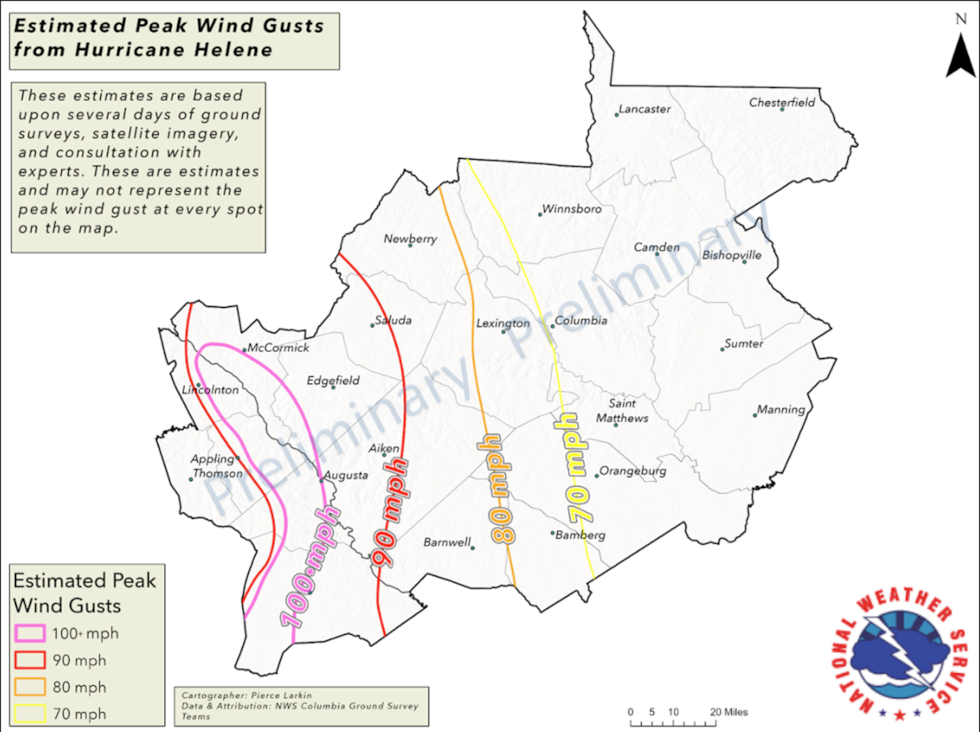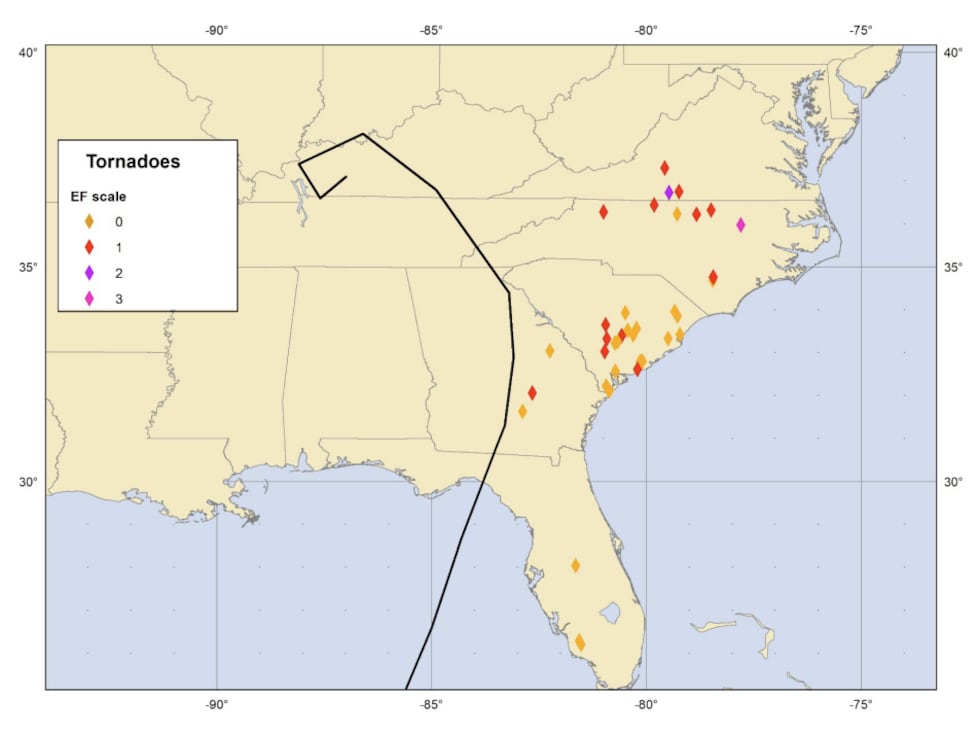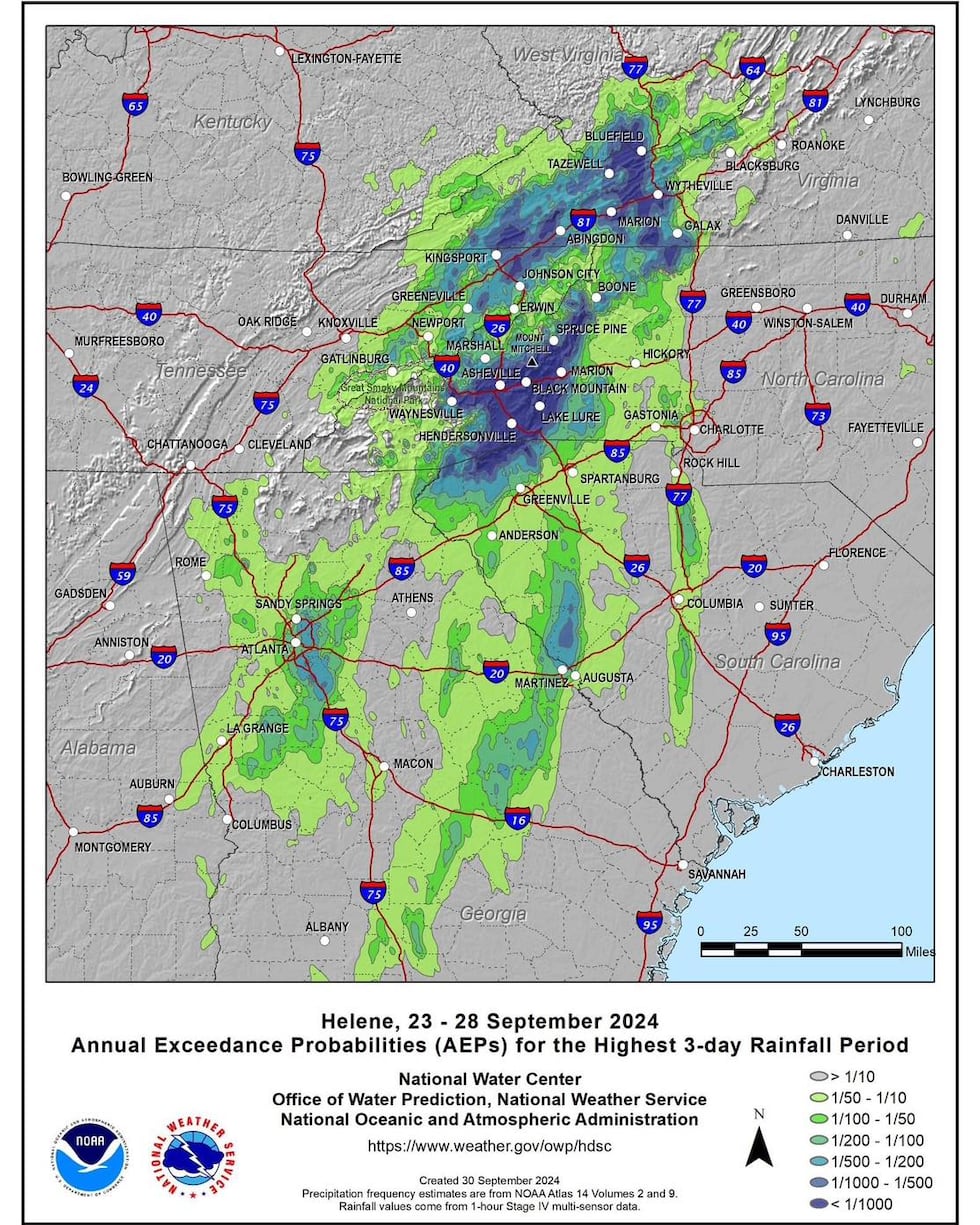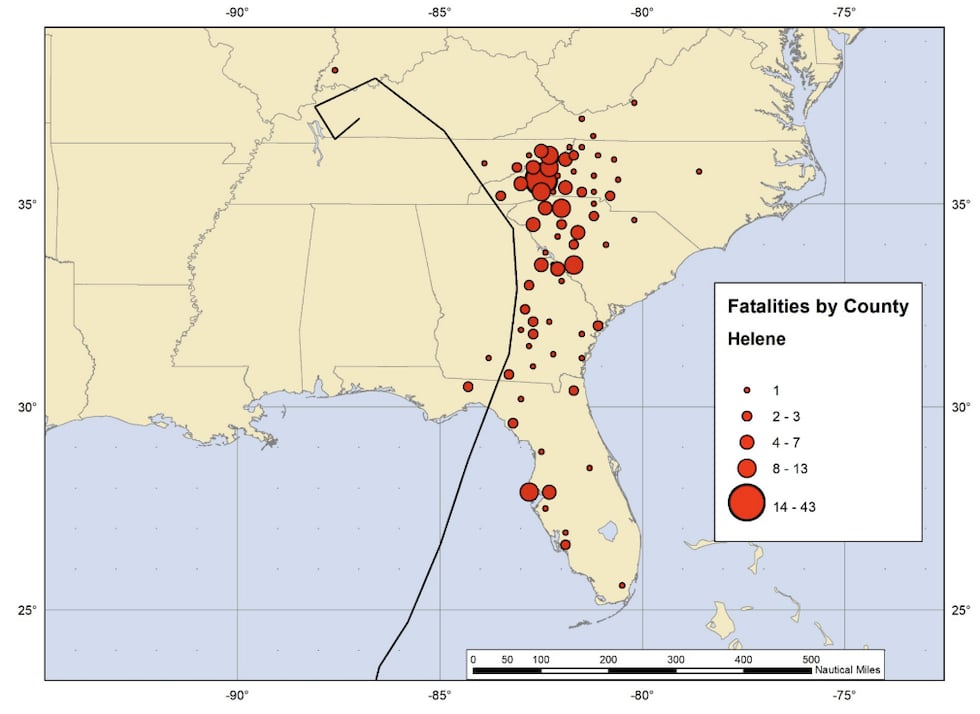New stats show how truly bad Hurricane Helene was in the CSRA
AUGUSTA, Ga. (WRDW/WAGT) - Hurricane Helene hit the CSRA in the early morning hours of Friday, Sept. 27, bringing devastating impacts - including fatalities.
We lost 29 lives just in the CSRA due to direct and indirect impacts from Hurricane Helene.
A newly released report from the National Oceanic and Atmospheric istration details the statistics, toll and effects of Helene as the storm swept through the region.
Read the full report:
Our region saw flooding, tornadoes, and severe wind damage due to the powerful hurricane.
This historic storm made landfall in the Big Bend of Florida as a category 4 storm before barreling north/northeast, directly impacting the western CSRA as a category 1 hurricane. Helene then downgraded to a tropical storm but still produced hurricane-strength wind speeds.
MORE FROM NEWS 12
Hurricane Helene: The long road to recovery

- ‘They were inseparable’: Helene recovery continues, but families can’t forget
- Are insurers ripping off Georgia’s victims of Hurricane Helene?
- Augusta leaders provide update on Helene debris cleanup
- Here’s an update on debris pickup in North Augusta
- FEMA issues warning of scams, impersonations after Ga. storms
“The CSRA & Augusta ended up sitting under the absolute worst part of the storm from a wind perspective,” the National Weather Service in Columbia posted on Facebook. “A swath of damage from Burke County northward over much of the CSRA & western Midlands was characteristic of at least 80 mph gusts for a period of 60 minutes or so.”
Tree canopies sustained more than 75% loss, with some areas losing over 90%, and not just from uprooted trees but the majority of them snapped, the agency said.
Above is a radar loop of Helene as the eye took a direct track over our western counties. Portions of the southern, central, and northern CSRA were hit the hardest by the eastern eyewall of the storm with wind gust estimates from 90 to more than 100 mph from the National Weather Service in Columbia.
The landscape of our region was changed.
Here’s some satellite imagery that shows our area before and after Hurricane Helene:
As stated above the CSRA saw the majority of its damage from wind gusts of more than 100 mph, something this region had never seen before.

Here’s a chart of top wind gusts recorded for our area. (please note sensors went out and damage confirmed higher wind gusts in some areas):
| LOCATION | MAX WIND GUSTS (MPH) |
|---|---|
| Augusta Bush Field | 82 |
| Columbia Metropolitan Airport | 58 |
| Thompson-McDuffie Airport | 52 |
| Barnwell Regional Airport | 46 |
Many residents of the CSRA reported tornado-like damage, but after surveying damage on the ground and via satellite - the National Weather Service declared strong wind damage associated with the eyewall of Helene caused most of our wind damage.
We did have a few tornadoes in the CSRA, but they were not associated with the vast majority of damage.
An EF-1 was recorded in Bamberg County on Sept. 26, roughly 18 hours before Helene moved in. We also saw an EF-0 in Burke County on Sept. 26.

Here’s a look at tornadoes all across the region that were spawned by Helene:

The vast majority of damage to our area came from strong wind gusts, but we also recorded high rainfall totals, which led to extreme river levels.
Here’s a chart of rainfall totals across the CSRA on Sept. 26 and 27:
| LOCATION | RAINFALL TOTALS |
|---|---|
| McCormick, SC | 13.03 Inches |
| Evans, GA | 12.37 Inches |
| Fort Eisenhower, GA | 12.02 inches |
| Appling, GA | 11.89 inches |

This map shows the probability of this rain event happening in a given year based on climatology.
The rain we saw across the CSRA was equivalent to a once-in-500-year event in many spots of Richmond, Columbia, Jefferson, Edgefield and Saluda counties.
Stevens Creek set a record with levels reaching 43 feet. Lake Thurmond jumped up 3 feet over the course of the storm.

Helene was a historic storm that brought damage from the Gulf Coast up to the Appalachian mountains.

We continue to think of the lives lost and their families.
Copyright 2024 WRDW/WAGT. All rights reserved.















